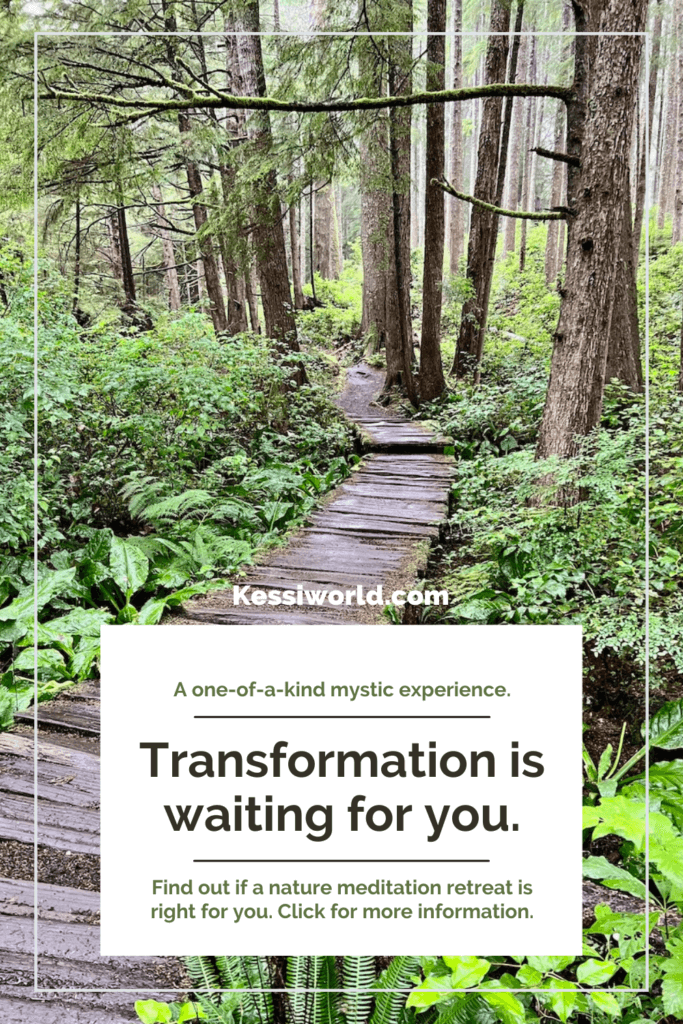Seattle to Vancouver drive — 20 road trip things to do
Make the Seattle to Vancouver drive more memorable. Itinerary tips, from a local, for planning the best road trip. Includes interactive map. Great ideas for day trips from Seattle too.
This wonderland we call the Pacific Northwest is a region with vast beauty and variety encompassing two countries and several states — depending upon who you ask. Regardless of semantics and despite the political border, we blend commerce, history, spectacular natural beauty, and fantastic itineraries for visitors — whether you’re returning or exploring for the first time.
Even locals who’ve made this drive countless times appreciate fresh perspectives. Believing the joy lies in the journey, I’ve designed this article to inspire ways to make your Seattle to Vancouver drive as enjoyable, engaging, and scenic as possible.
Anyone looking at a map will note there’s only one major highway connecting Vancouver with Seattle — so how hard can it be? You can jump on Interstate 5 and slog your way North. But if you want to be more mindful in this journey and experience connection — especially with native culture and nature — read on for great suggestions that are unique and easy to customize.
Just to be clear, there are two Vancouvers in the Pacific Northwest. This article is all about the drive between Seattle and Vancouver, Canada. If you’re looking for the Vancouver in Washington State, check out a sister article, Seattle to Portland drive — a road trip planner to make the day unique.
Use this article to plan a unique Seattle to Vancouver drive — including excellent ideas for day trips and fun overnight getaways.
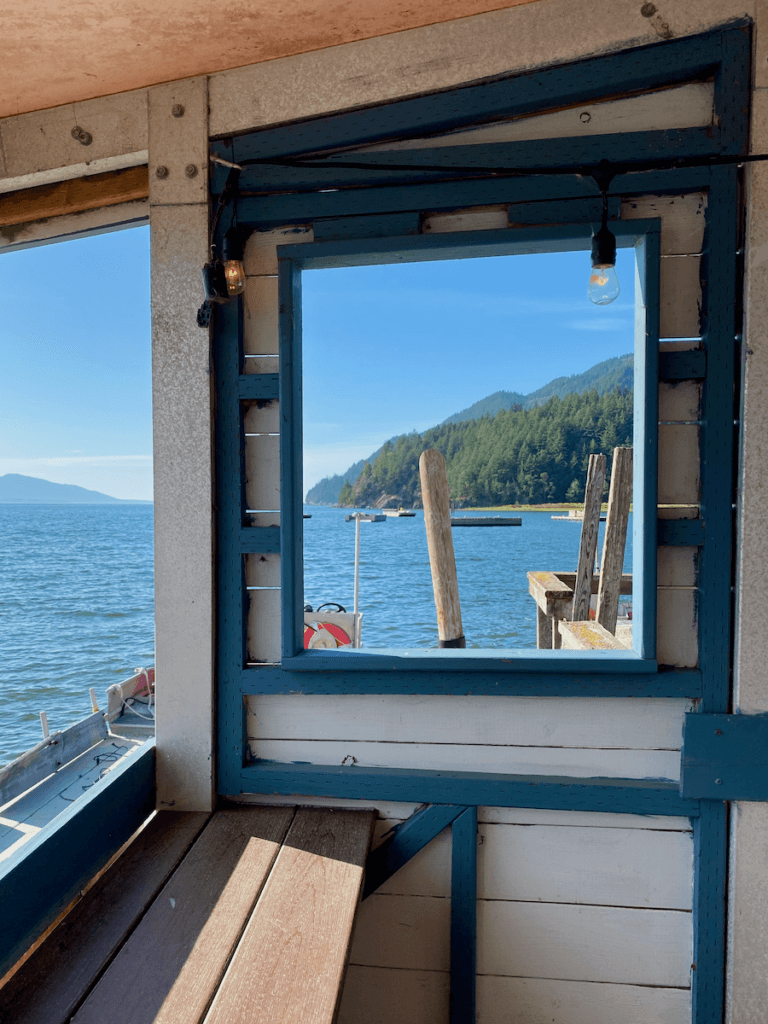
Table of Contents — Seattle to Vancouver drive
This article offers options to plan a more scenic and exciting drive. To include all the stops along the way, the time commitment is about 7-8 hours (or a whole day) versus a 2.5-hour nonstop (border wait times vary).
While I tell the story from the Northbound (Seattle to Vancouver) perspective, all the highlights can be enjoyed in reverse, Vancouver to Seattle drive.
- Why listen to me?
- Why nature forward matters?
- Forest Bathing on a road trip?
- The best time to drive from Seattle to Vancouver
- Boeing Future of Flight
- Hibulb Cultural Center
- Skagit Valley
- Add-on experience by the Salish Sea
- Edison
- Oysters by the Sea
- Larrabee State Park
- Fairhaven, Bellingham
- Blaine border town
- Lyden detour
- Driving across the United States/Canada border
- More information about travel planning in this region
- Let me help you plan an epic PNW road trip
- Interactive Map
- TikTok videos
Interested in maps and other Pacific Northwest travel information?
Read through to the bottom of this article, where I’ve included a detailed map of all my favorite stops on the Seattle to Vancouver drive. It’s interactive, so play around with it, and don’t forget to save it for use along the way. If, by chance, you’re considering taking the train between Seattle and Vancouver, I have a separate post for that as well, Train between Seattle and Vancouver.
Why should you listen to Matthew Kessi (that’s me)?
- The Pacific Northwest is my lifelong playground.
- As a former travel industry professional, my experience guiding people around Oregon and Washington State gives me valuable insight into the right balance between what is possible and rewarding.
- Unlike big travel websites, I’ve been to all the places, tested the ideas, eaten the food, and taken photos. Unless specified, I don’t receive compensation for naming specific locations — my recommendations come from the heart.
- Since I live in Seattle, I drive up and down Interstate 5 frequently to keep my knowledge updated.
- I’m a practical mystic, which means I actively integrate spiritual sensitivities and meaningful applications in daily life. I can help you find more rewarding experiences grounded in nature — and you can be more present to yourself, your companions, and all the wonders of travel. Check out the growing Kessiworld YouTube channel with magical nature videos designed to help you practice a powerful Nature Connection.

Join me on a Mt. Rainier 20 Minute Guided Nature Connection YouTube video.
Quiet your mind, open your heart, and allow your intuition to flow by following this Guided Nature Connection experience in the secret corner of Mt. Rainier National Park.
In this episode we reflect on ways that Nature’s Intelligence can help us shine through the nervous energy ups and downs of daily life? This is a path to get out of your head and into your own nature!
For a more simple Nature Meditation, also in the rainforest of Mt. Rainier, visit this YouTube video.


Why not try a nature connection road trip?
The difference between an “eh” experience and a memorable one is about grounding with the natural environment. You can probably think back to wonderful vacation experiences, and the common denominator would be feelings of belonging — or connection — to yourself, your companions, and the wonders of travel.
Whether that is a fun conversation with a server at a quirky restaurant or watching otters play along a pier, the magic occurs when you’re open to the beauty of a connection. It’s the wonder that awakens in your heart and soul.
And often, the loudness of modern culture, especially on vacation in an unfamiliar place, adds static. The static prevents a total opening up to the possibilities, consciously or subconsciously. That’s why — without grounding — you might return home feeling like you need a vacation from your vacation.
Nature-forward focuses on the magic of the terrain — making your connection to the land the priority of travel. But don’t worry. You can still enjoy your favorite experiences, like fresh oysters along the Salish Sea, digging in the sand, or whale watching. Overlaying a nature-forward focus makes all these things more meaningful because you’re more present in the “now.”
Over my lifetime, I’ve developed six steps guaranteed to help anyone deepen their nature-forward intuition. Staying grounded and mindful takes as little as 30 minutes daily. I give you all the information in this article, How to transform your travel experience with nature-forward vacations.
My list of things to do while driving between Seattle and Vancouver offers opportunities to practice a nature-forward approach. With a little focus, you will transform how you see Interstate 5, the Pacific Northwest, and travel in general.
Forest Bathing on your Seattle to Vancouver road trip?
Forest bathing, or Shinrin Yoku, is a concept that originated in Japan in the 1980s as its population migrated from rural to urban living to support a booming economy based on manufacturing and technology. However, in this transition, companies found that their employees were prone to sickness and burnout.
Japan’s government commissioned studies to get to the root problem. They found empirical proof that a mindful re-connection to the Natural World worked well as a remedy against the stress of daily life in a demanding corporate environment.
The concept of “forest bathing” comes from the phytoncides and other essential oils emitted from forest trees. They quite literally rain down. Several studies have shown that the fragrance of phytoncides reduces stress and promotes immunocyte growth, including natural killer (NK) cells.
Furthermore, a growing body of research points to the beneficial effects of exposure to the Natural World on health, reducing stress, and promoting healing. Some studies further clarify that only 20 minutes daily (of immersive Natural experiences) are essential to producing lasting benefits such as lower blood pressure, higher concentration, improved mental health, regulating cortisol levels, neutralizing inflammation, and even higher sexual satisfaction.
If you’re interested in more information, I’ve written a step-by-step guide, “Forest Bathing for Beginners” that offers simple and proven ways to find more meaning and fulfillment in a deeper Nature Connection.
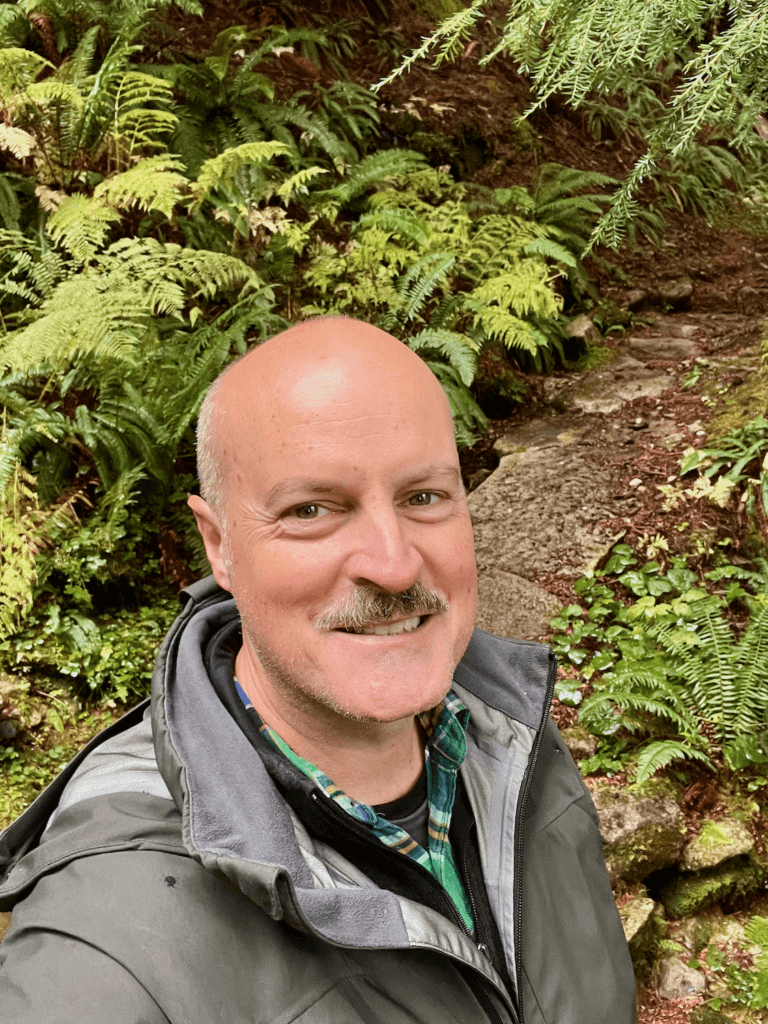
Where can you go Forest Bathing on a road trip?
The answer is anywhere! If you want some pointers, check out my article, “Forest Bathing Near Me — a guide to finding the best places to connect with Nature.”
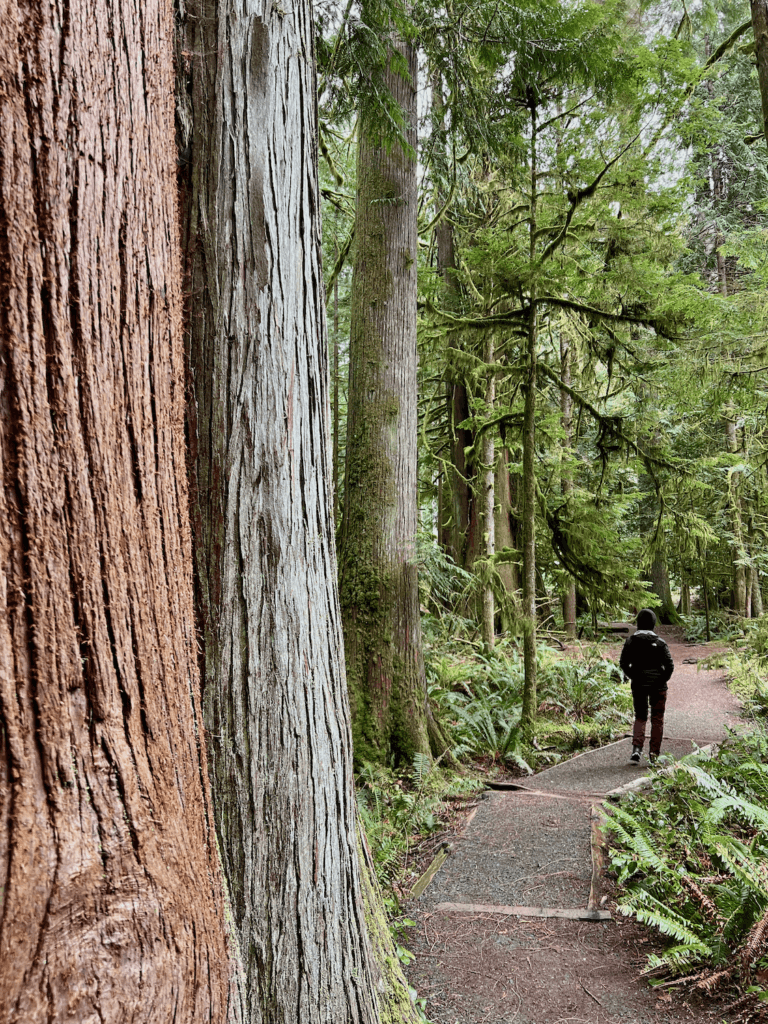
Speaking of Forest Bathing, Do you want to practice Nature Connection with a Pacific Northwest icon today?
The most magical and memorable experiences in the Pacific Northwest — even on a drive between Seattle and Vancouver — come from taking time to slow down and find grounding. This allows you to open up to a newfound sense of belonging, even if you’ve never visited Washington State before.
If you need clarification on what this means or are well-versed in nature connection but still curious, consider joining me for one of my YouTube videos. They are all about finding your way to tap into Nature’s Intelligence, regardless of your experience level or location. You’ll have access to my lifelong mystic gift of leading people into their own wild nature — in ways that might surprise you.
And the more you practice, the more you’ll be ready for transformational experiences anywhere in the Pacific Northwest. It starts with allocating 20 minutes of your day to mindful time in the Natural World. For simpler Nature Meditation, also in the rainforest of Mt. Rainier, visit this YouTube video.

Interstate Five and when to make the Seattle to Vancouver drive
Outside the large metro areas, the Pacific Northwest is a sparsely populated area of the US and Canada, and as a result, there are not a lot of highways between the main cities. After Interstate 5 (which becomes Highway 99 in Canada), the options consist of sleepy country roads.
Two additional scenic options represent the best of the Pacific Northwest but require more time and resources — including a visit to Victoria, BC, or the journey around the Olympic Peninsula (also via Victoria).
Since all the traffic between the two countries, including many trucking lines, funnels through two main border crossings, it is crucial to consider when to cross the border. Weekend travel between Seattle and Vancouver peaks in either direction on Friday and Sunday afternoons. Early mornings or late nights tend to be wide open.
The greater Seattle metro area has normal commuter traffic inbound/Southbound to the city between 7-10 AM and both inbound and outbound/Northbound between 3-7 PM — avoid leaving or arriving around these time bands. The worst days for traffic are Tuesday-Wednesday-Thursday (workers called back to work in the office part-time).
Similar advice can be taken for Vancouver, especially because Highway 99 goes through many suburb-like areas that can get snarled up with traffic lights.
The portion of the highway between Everett (the last prominent suburb of Seattle) and Blaine (just South of the US/Canada border in Washington) moves along most times of the day.
Be aware of the speed trap (highway patrol) around the Quil Ceda area (just north of Marysville), which includes a casino and high-end outlet stores.
The museums and shops highlighted on this itinerary are open during regular business hours. Some restaurants and attractions don’t have updated information listed online, and several businesses are closed mid-week. Call ahead for anything that is a “can’t miss” on the list — just to be sure.
Now… let’s get going on our Seattle to Vancouver drive!
This article will zero in on options closer to the main Interstate 5 since these detours add only a few hours to the trip. The stops between Seattle and Vancouver are listed from a Northbound perspective but reverse if traveling South from Vancouver to Seattle. The interactive map at the end of this article shows the route described and my favorite stopping points.
Boeing Future of Flight
30 minutes from Seattle, 29 miles
It’s time to say goodbye to Seattle and journey North. Early morning is my favorite time to leave the city because the traffic is easy Northbound, and the scenery is more likely to “pop” along the horizon. The Cascade Mountains, including Mt. Baker, are gorgeous in their command of the skyline that rolls down to green foothills and eventually fertile green farmland on the Skagit Valley floor.
Only a 30-minute breeze outside of Seattle, in Everett, Washington, Boeing’s largest plant and one of the most significant buildings in the world continues churning out widebody aircraft. Take Exit #182 and follow signs (about 6 miles) to the Boeing Future of Flight. Although the factory tour is closed indefinitely at the time of this writing (Summer 2023), the Aviation Center features fascinating exhibits that are exceptionally provocative for aviation-minded folks. The Sky Deck offers a fun way to take a broad view of the factory and busy runway.
As of this writing (Summer 2023), the Flight Center is closed on Tuesday and Wednesday and otherwise open between 9:30 AM – 5:30 PM. Adult tickets are $12
Do you want to stretch your legs in nature around Everett, Washington?
If the Future of Flight is too involved, consider these three lovely nature-forward options to stretch the legs:
- Narbeck Wetland Sanctuary (photo shown) — Quick from Interstate 5 with understated beauty steps away from Boeing plants.
- Mukilteo Lighthouse Park — A historic stretch of land with a peaceful beach — just 8 minutes from I5.
- Evergreen Arboretum & Gardens — Also a quick 6 minutes from I5. Compact but soulful gardens.
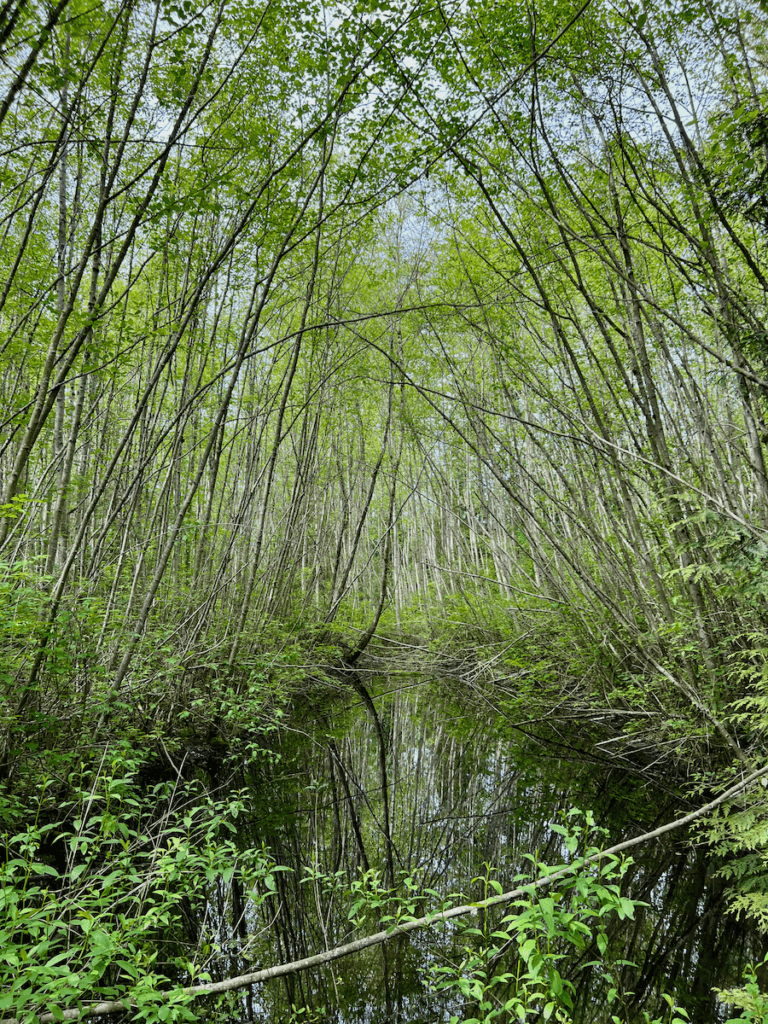

Hibulb Cultural Center
40 minutes from Seattle, 35 miles
Just a few more miles up the highway is the Tulalip Indian Reservation, which includes a variety of operations centering around Quil Ceda — including the Hibulb Cultural Center and Natural History Preserve (photo shown above). The stop is essential for anyone wanting to push to develop a better understanding of the people of the land before and during colonization by European settlers. You can also learn more by visiting the official website of the Tulalip Tribes.
The watershed 1855 Point Elliott Treaty, signed near present-day Mukilteo, Washington, drastically reduced Salish tribal lands. It was negotiated using about 300 Chinook Jargon words — which made nuances unclear to many of the signatories, who mostly spoke versions of Lushootseed (a completely different language).
The Snohomish, Skykomish, Snoqualmie, and other ally tribes were combined into the area that now makes up the Tulalip Indian Reservation — just north of Everett, Washington, near Marysville.
With the motto “So we can remember,” the living museum offers a vital perspective, from the Indian point of view, into the fold. The exhibits are well-curated and great for visitors of all ages. Start in the simulated longhouse for an overview film and then work through the central part of the museum — which highlights the importance of cedar and salmon and the family and spiritual structures of tribal life. The conversation feels engaging, rich with detail, and amazingly comprehensive.
At the time of this writing (Summer 2023), adult admission is $10 (check other rates on the site). The museum is closed on Mondays and open until 5 PM the rest of the week.
Explore the Skagit Valley
The Skagit Valley is about an hour North of Seattle, known for fertile farmland and beautiful views. If you’re lucky enough to make the Seattle to Vancouver drive around April, you can enjoy the Skagit Valley Tulip Festival in full bloom. Acres upon acres of flowers push their colors and textures for the world to see. And the world does see — people come from all over to take in the inspiring views.
No matter the time of year, this agricultural region makes for a great stop — roughly halfway along the journey. Since the options have many iterations, here are a few ideas based on your time.
Skagit Valley — the quick stop (an hour, including food)
One hour from Seattle, 62 miles
The best way to get in a quick stop is to exit Mt. Vernon (Exit #226), intertwined with Interstate 5, for a stretch and services. Follow signs to the town center, park the vehicle, and wander through the charming downtown on foot. Be sure to find the Skagit River and stroll on the boardwalk. There is a quality Co-Op for picnic supplies, or consider one of my two favorite places for food: Calico Cupboard and Shambala Ancient Grain Bakery and Bistro. Shambala, in particular, offers gluten-free options and is veg/vegan friendly.
Spend a few hours in the Skagit Valley
1:15 hours from Seattle, 67 miles
Northbound, exit in Conway (#221) and wind along a country road to Snow Goose Produce, a fun farm stand on steroids. They sell everything from delicious ice cream to candles to baskets — and, of course, seasonal produce too. Their position hugging the road, with plenty of parking, makes it an easy stop.
Continue on the country roads to La Conner, Washington. You’ll find a little something for everyone in this pioneer town peacefully situated along the Swinomish Channel. All my favorites are pinned on the interactive map below, but I’ve also written a more in-depth article, La Conner, Washington — the best of the Skagit Valley. If it’s tulip season (April-May), head over to Roozengaarde, but otherwise, follow signs to rejoin Interstate 5 North at Exit #230 (For the Southbound version, exit at #230 and rejoin at Exit #221).

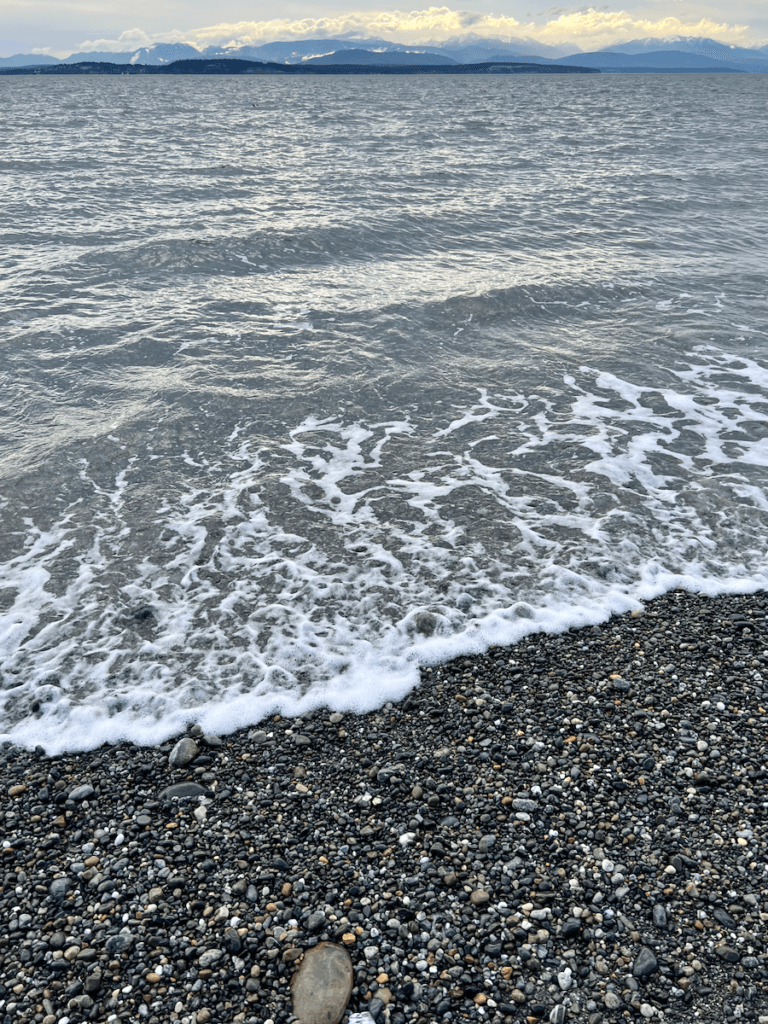
Add-on option — nature-forward Salish Sea
La Conner is the gateway to areas further West that follow the wavy coastline of the Salish Sea — including islands. While it’ll add a lot more time to your Seattle to Vancouver drive, it might be worth exploring Whidbey Island, also home to iconic Deception Pass State Park.
It’s even possible to park the car in Anacortes and jump on the ferry (as a foot passenger) for a whale-watching trip in the San Juan Islands (sail to Friday Harbor). I say foot passenger because driving your car onto the ferry is expensive and takes advanced planning. If you want more specific information, check out my article about the Washington State Ferry System.
These options are exceptional connections with the natural world and make sense if your itinerary can expand to allow overnighting in this region. I’ve written several articles that can provide additional information for planning more involved play in the Salish Sea:
- Deception Pass and Anacortes
- 8 of the best things to do on Whidbey Island
- Tesla road trip on Whidbey Island
- Captain Whidbey Hotel
- 16-day trips from Seattle
Olympic Peninsula road trip
Whidbey Island also connects well to the wild corner of Washington State, boasting alpine peaks, dramatic coastlines, old-growth timber stands, glacial lakes, and mossy rainforest goodness. Take the Washington State Ferry between Coupeville and Port Townsend and from there onward. If you’re curious about exploring Olympic National Park, access this article, How to plan an epic Olympic Peninsula road trip.
By the way, in spring and fall I facilitate excellent nature meditation retreats on the doorstep to Olympic National Park. The three-day experience will transform the way you see yourself in nature. Superb beachfront lodging, food, and mystic guided experiences await!
North Cascades National Park
If you have sights set on experiencing the wild and rugged grandeur of the North Cascades National Park, take a look at this article that features many ways to plan an epic road trip from Seattle to iconic stops within the North Cascades of Washington State. This information will help you develop an extensive itinerary for seeing the area.
Turf & Surf detour — Highway 11
Edison, Washington
1:15 hours from Seattle, 74 miles
The next adventure is a great one that involves a choice — stick to Interstate 5 or take the road less traveled along the forested seaside Highway 11. If the answer is yes, you want to connect with more nature, remove yourself from I-5 at Exit #231 and follow rural country roads North to Edison, Washington, population 147.
The hamlet clings to Edison Slough, an inlet of the Salish Sea, where tides flow twice a day amongst the muddy banks lined with seagrass. This farming community is home to Smith & Valley Gallery and cabinet makers, a few antique shops, and some delicious food options.
Grab some fun nibbles at Slough Food and baked goods from Breadfarm. While Slough Food appears to be just a liquor store selling delicate provisions to top an upscale picnic basket, venture further toward the back porch to find a table nestled amongst the seagrass lining the Edison Slough. The people here are friendly, and the simple menu items are perfect to curb mid-journey hunger pangs.

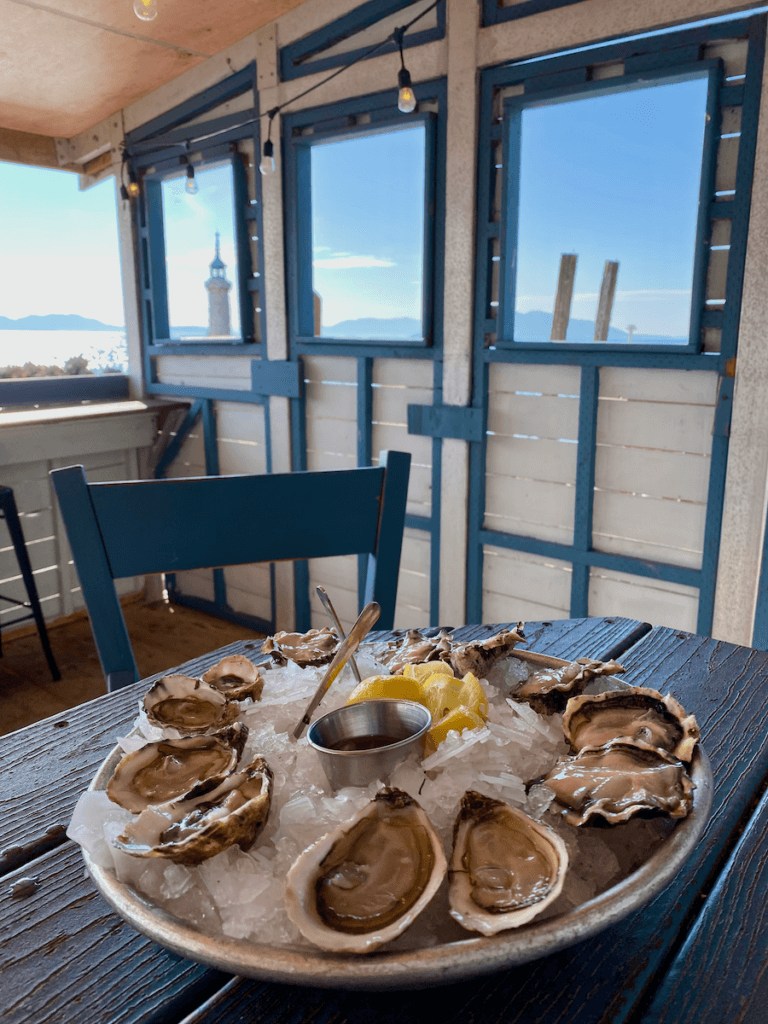
Oysters along the Salish Sea
Taylor Shellfish — Samish Farm
1:20 hours from Seattle, 77 miles
Exploring Edison’s quaint main street won’t take too long. Continue up Highway 11 to seaside oasis Taylor Shellfish for oysters on the bay. This is their Samish farm — a working processing plant — so be prepared for an unpolished experience that feels just as raw as the variety of delicious shellfish.
They have an excellent Caesar salad and ceviche to compliment your oysters and serve beer and wine. On a sunny afternoon, it’s tough to beat the simplicity of a fantastic view with the freshest seafood. This is always a stop with my out-of-town guests (who eat shellfish). At the time of this writing (Summer 2023), they are open daily from noon to 6 PM.
Larrabee State Park
1:25 hours from Seattle, 79 miles
From Taylor Shellfish push North a few more miles along a thick canopy of evergreen and maple until arriving at Larrabee State Park — Washington State’s first park. This is a particularly stunning drive amongst the Autumn leaves.
Larrabee seems to have a little piece of nature for everyone. Bumble along a rocky shore that could easily be in Maine. Watch outdoor enthusiasts drop a paddleboard or kayak in the water at the nearby boat launch. View the San Juan Islands from a soft pebble beach as slippery seaweed flops onto dry land.
On the other side of the highway, the Chuckanut Mountains await with only uphill options to pristine lakes surrounded by dense fir forest. The hike to Fragrance Lake is about 5 miles round-trip and challenging enough to get the blood flowing.
Continue on North to connect with Interstate 5 or stop in Fairhaven, mentioned next.
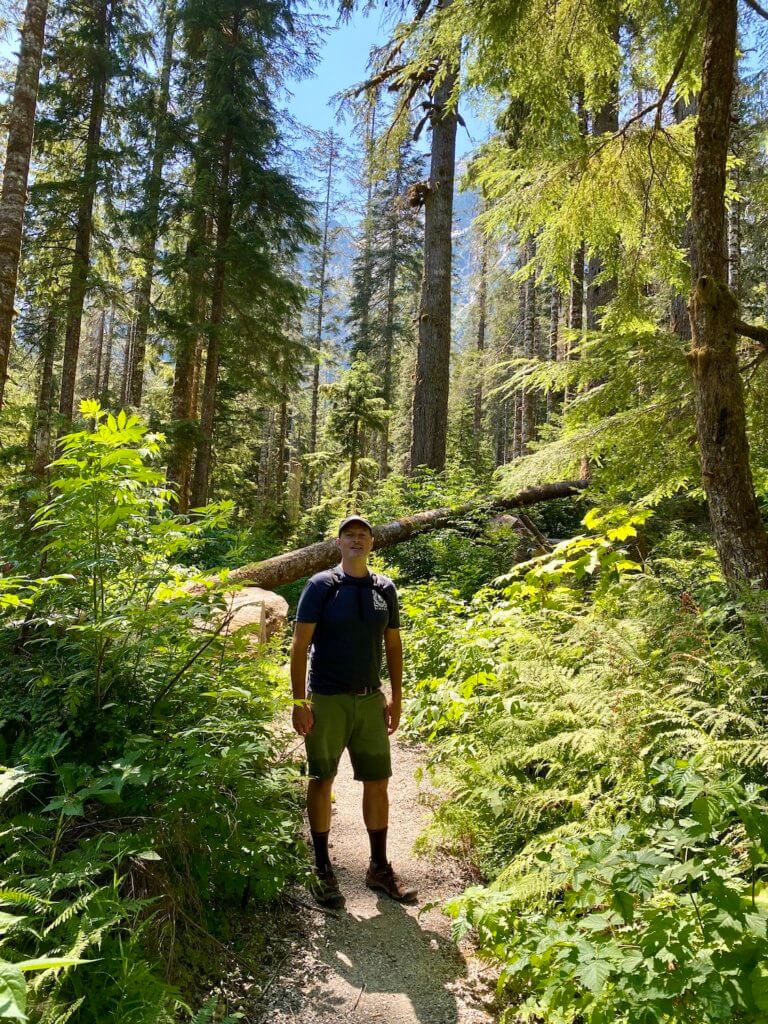
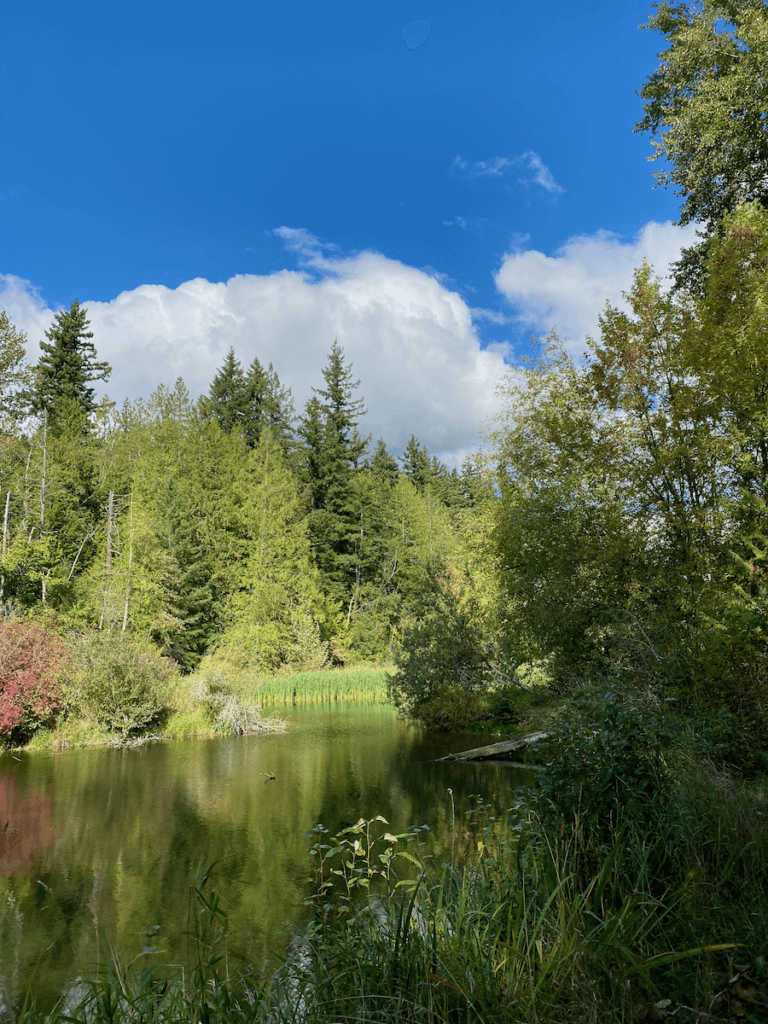
Fairhaven — old-time Bellingham
1:30 hours from Seattle, 86 miles
Fairhaven is on the South end of Bellingham. The neighborhood was once a separate city but now is a historic district on the National Register of Historic Places with 14 buildings of primary historical significance. If you’re not combining this with the Highway 11 adventure (mentioned above), take Exit #250 from I-5 (in either direction) and park in the heart of this enclave of Victorian-inspired buildings.
Village Books is a great place to investigate, and Evolve Chocolate + Cafe, upstairs, offers a great menu of farm-to-table items. I also enjoy the food at Avenue Bread, a local chain with a few other locations. Otherwise, wandering these streets offers a variety of food and beverages, shopping, and history.
Do you want to stretch your legs in nature around Bellingham, Washington?
- A few blocks away from Fairhaven, on the Salish Sea, jump onto S Bay Trail, a dock-turned walking trail suspended above the water. The views are fantastic, and the walk leads to Woods Coffee, a cafe with pick-me-ups as delicious as the setting — perched on some rocks directly above gentle waves lapping in from the sea. There is parking here, but it seems congested most of the time, so I recommend walking.
- Whatcom Falls Park (photo shown) — A natural oasis rushing with life, this delight is only 10 minutes from exit #246 on Interstate 5. I appreciate that the peaceful waterfalls are reasonably accessible from a large parking lot.
- Sehome Hill Arboretum is a magical forest, even with a sturdy watch tower, to view the entire Bellingham seashore. It’s easy to access, near Western Washington University — a mile-ish from I5 exit #250.
Balancing the border time in Blaine, Washington, on your Seattle to Vancouver drive
When many reach this border hamlet along Interstate 5, they are ready to push through to the US/Canada border. But Blaine offers a compact downtown with solid food options, including a rocking food truck serving great Mexican delights.
This is a great stop to refuel and stock up on provisions when you anticipate a lengthy border queue (Peace Arch border crossing) or vice versa when traveling southbound.
If you have time and want more insight into the area’s nature, head to Birch Bay State Park, near the semi-circle shoreline with the same name (photo). It’s only 8 miles from Interstate 5 exit #266.

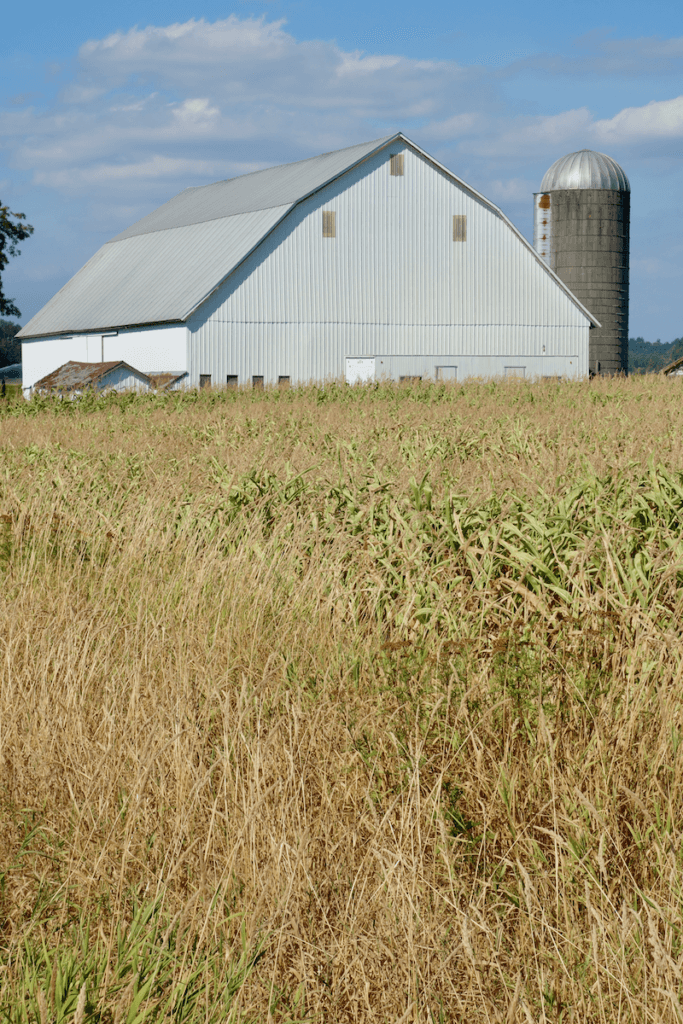
Detour to Lynden, Washington — and a quieter border crossing
Between busy Interstate 5 and the foothills to regal Mt. Baker, fertile farms quietly exist with little fanfare but a big soul. Among all the agriculture lies Lynden, Washington. Even though the Dutch-themed town is only 13 miles from exit #255 (when heading northbound on I5) or 10 miles from exit #270 (southbound I5), it seems to offer an entirely different small-town perspective of this region of Whatcom County.
While the nearby border crossing wouldn’t always make sense when driving from Seattle to Vancouver proper, it is an excellent connector to areas east of Vancouver like Abbotsford or for plugging into eastbound Trans-Canada Highway 1.
Driving across the United States/Canada border
1:45 hours from Seattle, 111 miles
To monitor the lines at the border on the US side, I recommend the Washington State Department of Transportation app. The app provides excellent real-time information about the ferry system, Amtrak, and up-to-date coverage of queues at the three main places to cross the border in Western Washington/British Columbia. The Canadian version (for the Southbound journey) can be downloaded from this site: BWT.CBP.Gov.
US/Canada border procedures have returned to normal since the pandemic. However, it’s always a good idea to reference the official government websites:
- Government of Canada’s website
- Washington State border crossing information
- US Government Information for Canadians
For land travel: As of June 23, 2023, the bulletin from the US Customs and Border Protection website, U.S. citizens entering the United States by land or sea are required to present a valid WHTI-compliant document, which includes:
- US Passports
- US Passport Cards
- Enhanced Driver’s Licenses
- Enhanced Tribal Card (ETC)
- Trusted Traveler Cards (Global Entry*, NEXUS, SETRI, or FAST)
- Military Identification Cards (for members of the US armed official maritime business)
* The Global Entry (GE) card is only an ENTRY document and may not be used to enter Canada, Mexico, or Adjacent Island.
All US Citizens must present a valid passport for air travel to/from Canada (or anywhere else internationally). This information is offered as a convenience but is subject to change, so please refer to the official government websites for other conditions for traveling across the border.
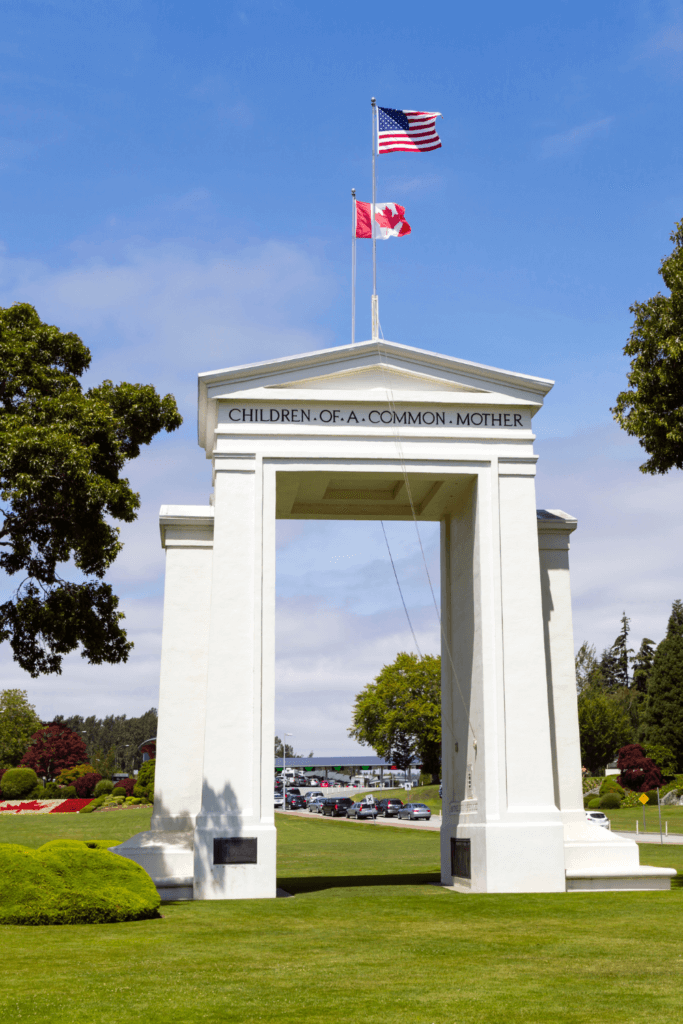
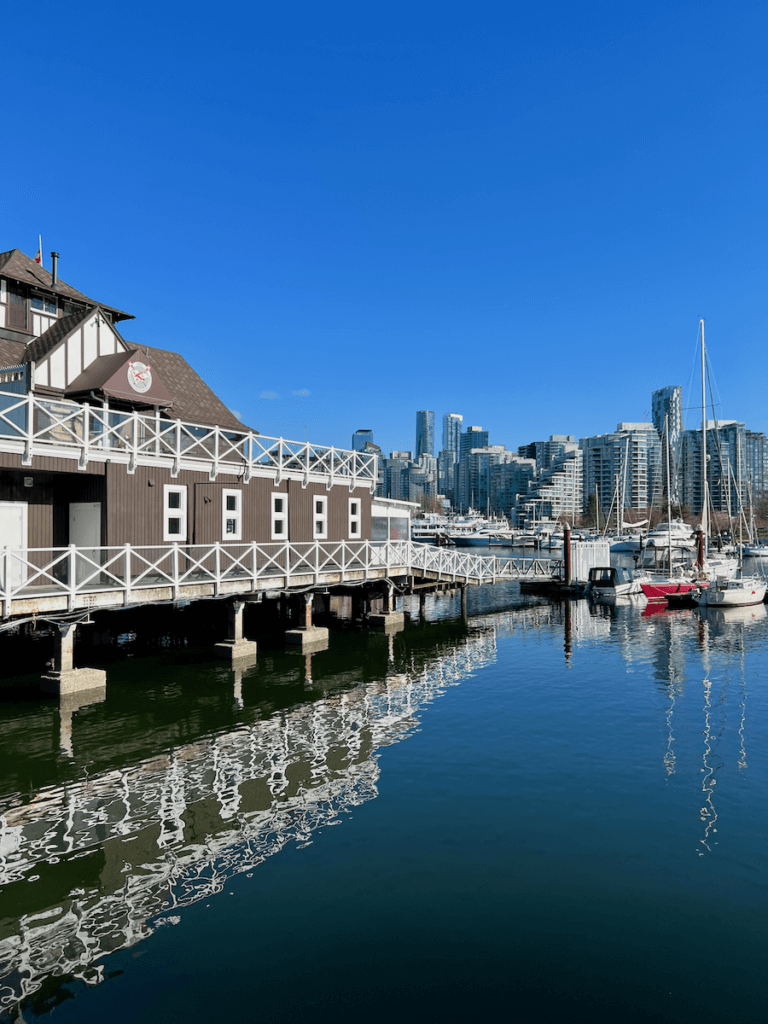
The final stretch — the United States/Canada border to Vancouver
2:35 hours from Seattle, 143 miles
Interstate Five converts to Highway 99 in Canada, and the signs are intuitive to venture into Vancouver. A few miles up the road, The Shops at Morgan Crossing can be a place to stop for services.
The rest of the way into Vancouver involves suburban roadways and a barrage of traffic lights through residential neighborhoods. I don’t love this part of the trip and work as hard as possible to push through to the city. One place with good food in a great location is Milltown Bar & Grill in Marpole, just right over the Richmond Bridge. But then, if you’ve come that far, why not wait to get settled in the city and find just the proper grub?
Seattle to Vancouver drive — a day trip of unique detours
The drive between Seattle and Vancouver doesn’t have to be a slog, and these hints make for a memorable, fun day exploring local areas along the route. Get an early start, be open to the possibilities, and enjoy plenty of stops and food. All in all, the meandering of this complete itinerary could take up an entire day, and enjoying these diverse options is well worth it. Now get out there and road trip!
More information on stops between Seattle and Vancouver
- Big Four ice caves (photo shown)
- LaConner, Washington
- Day trips from Seattle
- Deception Pass
- Whidbey Island
- North Cascades National Park
Travel around the Pacific Northwest
- How to plan an epic Olympic Peninsula road trip
- Train from Seattle to Vancouver
- Train from Seattle to Portland
- Seattle to Portland drive
- How to navigate the Washington State Ferry system
- Traveling between Seattle and Portland
- How to plan a remarkable day trip from Seattle to Mt. Rainier
- Exploring the wildflowers around Paradise in Mt. Rainier National Park

Interactive map of Seattle to Vancouver drive
This map is a collection of my favorites on the road trip between Seattle and Vancouver. I’ve either been to all the places or have it in good faith they are worthy of a mention.
These suggestions are my point of view — I do not receive compensation for placement on the map or written articles unless expressly noted. Rest assured; they come from the heart!
Have more planning questions?
Deception Pass State Park
Why not take a detour to Washington State’s most famous park?
Skagit Valley Tulip Festival
Are you traveling during spring? Don’t miss the patchwork of color in the valley.
Curious about taking the train?
The train covers similar scenery between Seattle and Vancouver without the hassle of driving.
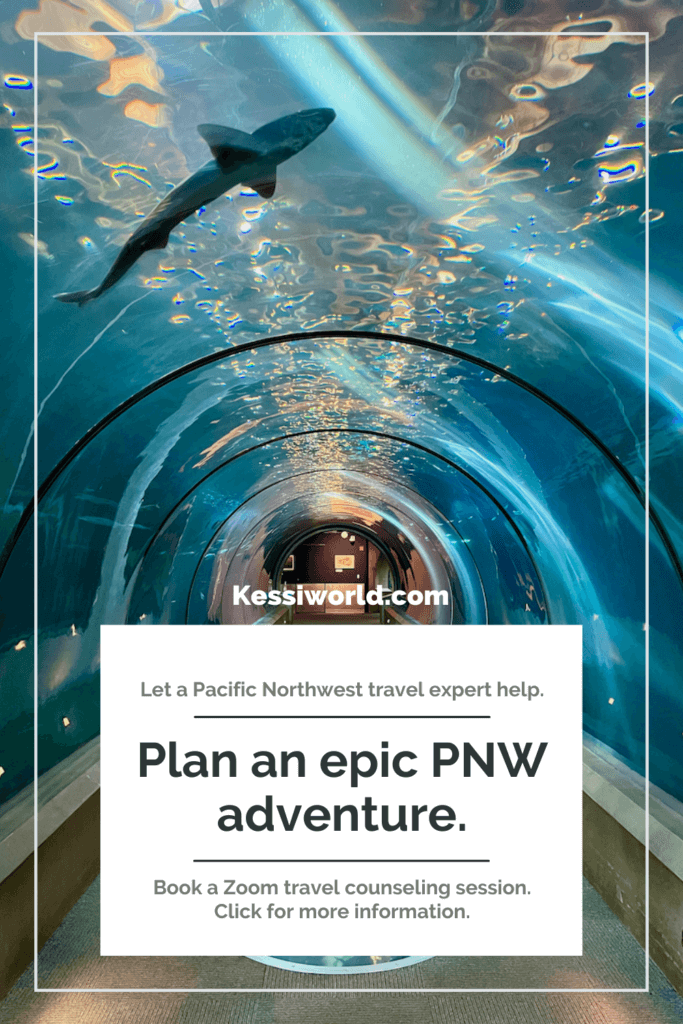
Travel the Pacific Northwest with purpose and meaning.
A lifetime of wandering about Oregon and Washington State gives me powerful practical wisdom to share about travel. And you receive the bonus of my unique mystic connection to the land. I can show you how and where to deepen in nature. This is perfect for:
- First time visitors to the Pacific Northwest.
- Locals hosting out-of-town visitors.
- Those wanting to experience travel + nature + spirit in new ways.
Learn what impedes, supports, and transforms you through Nature Meditation.
Are you stuck in the hamster wheel of daily life, yearning for change but unsure where to start? Are life circumstances overwhelming you, leaving you feeling lost and anxious? Is there a background static of uncertainty holding you back? Welcome to a transformative nature immersion retreat and guided mindfulness experience that will empower you to see your wild nature. You will forever be changed.
